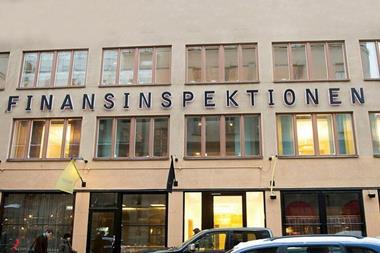Patrick Ferguson is general manager and pension fund administrator of the E450m+ Construction Federation Operatives Pension Scheme. Speaking about the real estate investment sector in Ireland he said: “On the retail side there still seems to be some supply, retail parks are becoming popular here and space is available to buy.”
Ferguson said that property was generally fairly buoyant but most of the heat is in the domestic housing market. “That has been racing ahead for many a year – 25% of houses and apartments on sale are being bought for letting - but professionally that doesn’t interest us as residential is not considered an institutional-type investment in this country.”
He pointed out that values are moving ahead, and rents on his fund’s office and retail properties were “reasonably good”.
“The valuations are 6 or 7% up on a year ago and that’s not to be sneezed at.”
He said that his fund used to have around 15% of its allocation in property, but it has dropped back a little. “Not in the sense that we have reduced our assets, it’s just that the fund has pulled ahead and (as a proportion of it) property has fallen back because of the way you tend to buy a chunk at a time.
“We’re putting some money into a unitised European real estate fund which should take it back up towards 15% again.”
Within Ireland the Construction Federation Operatives fund holds all its property assets directly, but when it ventures abroad it goes indirect. “We haven’t considered the US or Asia yet, we’re just dipping our toe into Europe to start with. I have a very conservative board of trustees! Because we’re in the construction business they like to be able to kick the tyres and have a look at the properties we take on.”
In Ireland Ferguson has no industrial property at the moment. “We used to have some but it was becoming a bit jaded so we let it go for redevelopment. We hold 50:50 office and retail. But in Europe the fund is spread right across all the major property sectors.”
He concluded that: “In terms of enthusiasm for property at this point I would say we’re optimistic.”
Ireland’s E15.3bn National Pensions Reserve Fund recently announced that it is to divert 8% of its equity holding into real estate over the next five years. This came after a strategic review that revealed its cautious asset allocation formula was failing to maximise returns.
In 2001, the NPRF commission, which is appointed by the finance minister to set the fund’s investment strategy, allocated 80% to large cap equities and 20% to bonds. But in a revised strategy document published last year the commission opted for property as a potential source of long-term returns.
NPRF spokesman Adrian O’Donovan said: “Our strategy is to increase the fund’s returns without substantially altering its risk profile.”
By 2009 the fund plans to have invested E2bn indirectly through international property investment vehicles, including the Asia/Europe focused Morgan Stanley Real Estate Fund II and the Axa French Development Venture II.
According to 2005 year-end results, it has already invested E402m in the first phase.
The NPRF fund will invest 50% in European property, 35% in North America and 15% in Asia-Pacific.
In addition to real estate, the fund has allocated 8% to private equity and 2% to commodities. Because liquidity is not an issue - the fund receives 1% of GNP from the exchequer and there will be no draw-downs before 2025 - it can exploit less liquid asset classes. The revised asset allocation is a result, said O’Donovan, of “modelling and judgment”, rather than external advice.
According to the IPD, overall property returns in Ireland should be about 20% for 2005 if the performance of the first three quarters is matched by the final one. This compares to an expected 16.4% for the UK.
The overall trend in 2005 was a convergence of sector returns. In the first nine months returns on retail, office and industrial were 17.5%, 13.5% and 9% respectively. But the gap between the best and worst-performing sector had narrowed to 8% in September 2005 from 12% in September 2003.
Irish retail has delivered the highest total returns over the last three and five years: the five-year retail return in Ireland averages 19.1% per year.
Retail warehouses were the star performer during 2004 and the first half of 2005, although they fell back in the third quarter of last year.
Retail warehouses and high street shops, at 18.7% and 18.5% per year respectively, have marginally out-performed shopping centres, at 15.9%.
Over the first nine months of 2005, Ireland’s all-property returns of 14.6%, have comfortably exceeded returns on equities and bonds - at 12.5% and 8% respectively - and have already beaten the 11.5 per cent achieved by property in 2004.
Not everyone is looking at Irish real estate with unlimited confidence however.
One senior pension fund manager who invests in real estate but asked not to be identified said: “Given the performance of all four sectors over the last ten years and the amount of new supply coming onto the market you have to ask whether values can go on rising. “It’s a simple case of supply and demand and I don’t think it would take too many IT companies to up-sticks and move to Asia to precipitate a crisis.
“In that situation it all comes down to location, location, location as all the marginal properties will be affected first.
“Last week there was a report on television from a journalist called Olivia O’Leary. She said that when the dogs in the street start howling about investing in property it was time to get out. Her report was followed by three adverts in succession all inviting people to invest in real estate!”
In terms of the funding standards being imposed on pension funds by the Irish government, the manager said at present it was too early to predict the effect on property allocation.
“I think every employer and every scheme is taking a different attitude to this. On balance I suppose it has to be a negative to both property and equities but the extent to which it may hurt either is unknowable right now.
“There’s a very real tension at the moment for any Irish pension fund between matching requirements and the perception of where the investment cycle might be and where positive returns may be found.
“There are still a few people in pensions who believe that if you’re investing for a long time you’ve got to be in real assets. If you want to afford a pension scheme in the long term you’ve got to tend in that direction.
“General perceptions as to where markets are going next don’t paint a rosy picture for the bond market. It’s utterly impossible to get anyone to predict what a stable 10-year rate is now. It might be as low as four, but actuaries prefer not to talk about it, it’s too dangerous a topic.”
In the early 1990s Irish institutions enjoyed an open playing field when it came to investing in the nation’s commercial real estate. Since then an economic boom driven by low (EU) interest rates plus government tax incentives has generated an influx of private investors put together by investment packagers.
In 2004 about E970m was invested in the Irish property market with another E2bn invested by Irish institutions and individuals in the UK and Europe. Those figures will be exceeded by 2005’s performance when it’s compiled.
Last year notable deals included the E367.7m invested by a private syndicate in the sale-and-leaseback of an extension of Allied Irish Bank’s headquarters in Dublin 4. Another was the E140m sale of Scottish Provident’s Irish property portfolio to Irish Life Assurance.
One of Northern Ireland's biggest property players Mar Properties was recently involved in the purchase of a shopping centre in Norwich, UK, for around E34m and a prime commercial property on Glasgow's Argyle Street for over E38m.
Although regional developments have figured, the Irish real estate market remains dominated by the Dublin region where population has grown by about 120,000 (to 1.12m) over the last six years.
The office vacancy rate is 18% across a total space of about 3m m2.
Gross absorption of office space in 2004 of 193,061m2 was the highest since the boom year of 1998 and the pace was maintained throughout 2005.
Over 500,000m2 of office accommodation is due to come on stream in Dublin Docklands before 2008, according to latest research from property consultants CB Richard Ellis Gunne (CBREG).
A total of 28 Docklands office developments are highlighted in the CBREG study. These include the Treasury Holdings Spencer Dock scheme office (150,000 sq m). The group is currently at the pre-planning stage for the third phase of this scheme which draws in another 52 acres.
Approximately 320,000m2 of office accommodation has been given the green light by the Dublin planning authority and a further 35,000m2 is awaiting a planning decision.
As is often the case when confronted by a lack of opportunities, some investors have chosen to become developers, either in their own right or in joint-ventures with traditional developers. In Waterford, a 32-acre mixed-use commercial development site located at Outer Ring Road and Airport Road sold for a remarkable €45m at auction last November. The auction guideline was around €26m.
Located three kilometres from the city centre, the site belonged to Waterford City Council. It was purchased by Ed Douglas of Douglas Newman Good. It’s regarded as the best commercial development site ever to come for sale in southeast Ireland.
Total retail space in Ireland is about 1m m2. Last year two new shopping centres were opened, one at Dundrum, in suburban Dublin, and the other at Mahon Point in Cork. The impact on high streets values within these two cities is still being evaluated.
The industrial/warehouse market has become dominated by owner-occupiers due to low interest rates and a favourable tax regime that has made buying your own site a good option.
Infrastructure improvements are also pushing the market along in adjacent areas with examples such as the completion of the M1 motorway from Dublin to Belfast and this year’s completion of the road tunnel linking Dublin’s orbital M50 with the Port of Dublin.
l A recent pan-European study undertaken by IPD shows that net income yields tend to be lowest in Ireland, Germany and Switzerland. Researchers attributed this to substantial variations in the pricing of investment property across Europe despite a benign environment of low inflation and low interest rates. Yields were found to be highest in Netherlands and Norway. IPD believes this study will help investors who are struggling to find consistency in cross-border property yield data.












No comments yet